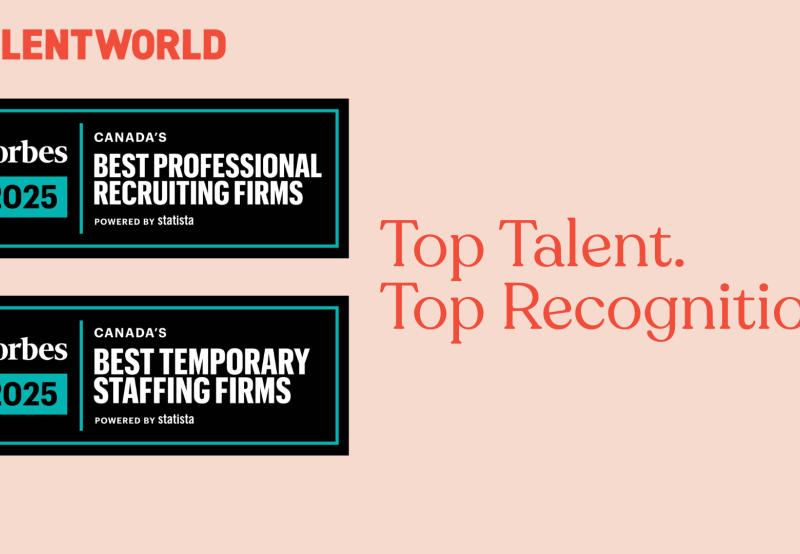
Highlights
- Virtual onboarding comes with some special challenges. Adapting to meet 4 major considerations can put you on track to developing a strong journey to engage new hires, wherever they may be located.
- Put emphasis on system set up and equipment needs early to kick start the process for new hires and have them ready to go for day 1.
- The ‘buddy’ system, or assigning a mentor, increases new hire satisfaction with their onboarding experience.
- With newly remote workers experiencing an increase in stress and difficulty managing their mental health, additional support to new hires can alleviate these feelings early and ensure a smooth transition into their new role.
Whether it be in the office or remote, ensuring a positive experience for new hires and a smooth integration into the company is fundamental to their success. A strong onboarding program has been found to improve both retention and productivity of new hires.
For those of us who have been working from home since March, having made the switch with little planning, we’ve dealt with some special challenges in getting adjusted. Unfortunately for new hires, starting a new job can be scary and lonely as is without the added obstacles of working from home, especially without the quick access to a desk neighbour for support.
Taking into account these challenges and drawing from our experience with remote collaboration, we’ve identified four factors to take into consideration when developing your virtual onboarding plan, supplemented by an outline for integrating them into your current processes.
Health & Safety
As you would take measures to ensure Health & Safety in the office, whether it be purchasing adjustable monitors or chairs, a suitable workspace ought to be established in employee homes as well. As a result of the ongoing pandemic, a recent survey by HRReporter found that 45% of Canadian office workers had to rearrange their home to accommodate working remotely. We can vouch firsthand that some of our teammates were working at their kitchen table or in their bedroom when we first made the change. Sitting at the dining room table for 8 hours a day is fine on a temporary basis but can cause some serious problems long term.
In setting up your new hires, provide guidelines and tips on how to arrange an ergonomic workstation along with a list of items that can be provided by the company (monitor stand, non reflective screen cover, supported mouse pad, etc). Granting the opportunity for new employees to identify what they have and what they need or will need moving forward.
Emotional well-being and mental health support are equally as important for new employees getting started in a fully remote setting. In an office, the odd comment or question to your desk mate and casual conversations in the break room contribute to a sense of belonging and social support within the company. A study conducted by ADP this year found that Canadian workers who have moved to remote work since the start of lockdown are struggling to manage their mental health from home with 38% expressing an increase in stress. A separate survey by HRReported found that 54% of workers are feeling disconnected or alone since the change.
When working from home, life stress and work stress can easily meld together. Putting measures in place early on will ensure new employees are aware of the resources available and are encouraged to speak up.
Equipment and Technology
Normally, a new hire would be assigned a desk with a computer set up, a phone, and the same internet as everyone else. As a result of the sudden change to remote work, many companies didn’t have processes or policies in place to readily address the needs of those who don’t have the tools and technology to work from home. Considering that many employees had to make do with their personal devices, where a slow computer or an unreliable internet can cause some serious frustration, a recent survey by ServiceNow found that 37% of workers see technology as a barrier to their productivity.
Luckily for new hires, we can address this in advance and identify their needs for technology and services, along with a set policy on what is covered for them. Having this discussion early is ideal as it will allow time to have anything delivered, perhaps a company laptop or phone, and set up for day 1.
Cybersecurity and Data Protection
If you’re working in an office with sensitive information, there is usually an iron mountain or a shredder to manage physical documents, locked cabinets for filing, as well as password protected devices at every desk. The special challenge with remote workers is that these files are not secured in the office and need to be managed in another way. This could involve supplying a lockable cabinet where physical files can be stored or discussing location and costs of local shredding services. For remote hires, communicating options and policies around records management early will eliminate uncertainty and help keep sensitive files from piling up or being dropped in the recycling bin.
At the same time, digital information also needs to be secured and managed appropriately, especially if the employee lives in shared accommodations. A recent survey conducted by VMWare this year revealed an increase in cyberattacks and phishing attempts – 99% of Canadian IT professionals reported a greater volume of attacks in the past 12 months. A separate survey by VM, as a supplement to the impact of the pandemic, also found that 92% of companies across the globe have experienced cyberattacks linked to COVID-19 malware. Our parent company, GardaWorld, has put together numerous informative pieces on cybersecurity risks including an outline of 9 considerations for remote workers where they suggest ensuring a secure WIFI network and updated software.
Check in with new hires before their start date to ensure all work devices are password protected and appropriately secured. In addition to this, maintain updated awareness training and send reminders to be hyper aware of cyber attacks and phishing emails.
Team Cohesion and Culture Integration
A significant part of the onboarding process revolves around conveying the company culture for new employees to help them better integrate and feel like a part of the team. This poses a unique challenge with remote hires because they don’t get as many opportunities to observe or interact with their colleagues to gather more information about the culture of the office and the team. Elevator interactions, passing in the hallway, or eating lunch together are just a few examples.
This is where the buddy system comes in handy. Helpful in both an office or a remote setting, connecting your new hire with a ‘buddy’ or a mentor gives them access to someone who can guide them through their first few weeks and months, answering questions, giving advice, and communicating the team dynamic. A study of 600 new employees at Microsoft found a link between new hire perceived productivity and the number of times that they met with their mentor; 97% of new hires who met with their mentor more than eight times in the first 90 days reported greater speed to productivity in their role. The buddy system also increased overall satisfaction as 23% of the employees reported being happier with their onboarding experience than those without an assigned mentor. Translating this into a virtual setting, Buffer, a fully remote software company, has implemented a system where new hires are assigned 3 mentors providing different types of context – a leader buddy, role buddy, and a culture buddy.
For new additions to the team, a welcome package with some company swag and a virtual lunch with the team within the first few days can help boost confidence and reduce some anxiety and uncertainty. Following up with more intimate meetings and touch points with 1 or 2 team members are great for developing personal connections and provides time to share inside jokes, stories, and current projects. Additionally, aside time for 1 on 1 meetings between the new hire and their manager, this has been found to be especially valuable to new employees. 72% of employees in a study performed by LinkedIn placed time with their direct manager as the most important part of their onboarding experience. This is also in line with a separate study that found employees prefer their manager for providing initial guidance, rather than HR. Meetings with their manager presents the opportunity to discuss any questions and communicate expectations and responsibilities.
Adjusting Established Onboarding Procedures
Now that we have some knowledge around the challenges that come with remote onboarding, we can integrate solutions into current processes to adapt and improve the overall experience. To take some of the work off your plate, we have different systems in place to support new employees through their onboarding journey.
Pre-Onboarding
Start your new hires off strong by ensuring they have everything ready to go for day 1 so no time is wasted on technical issues and waiting for system access. Before their first day, work with the new employee to identify their needs for technology, an ergonomic workstation, and secure document management. This way, if anything needs to be delivered, it can be scheduled to arrive before day 1.
Closer to the date, the arrival of a welcome package containing company swag, a personalized letter from management, and the schedule for Day 1 can help get your new hire excited about this new chapter in their career.
First Day
By the end of day 1, we want the new team member to be ready to start training, with paperwork completed and any tech issues taken care of. Have access to email and any required software arranged and tested right away to reduce any waiting time throughout the day. When it comes to paperwork, having it all managed online is your best option to avoid waiting for the mail. If you don’t have any systems in place to manage this, ask us about TalentWorld tools. As an agency, virtual document management has been our preferred method of managing the documentation for the 800+ employees we place on assignment weekly. We can get you hooked up with the same dashboard we use where your new hire can access and fill out important documents and forms that have been uploaded by you, all in one place and in a mobile friendly format. As an official introduction to the company, we can also host videos to communicate your culture and brand story. In the past month, we’ve sent out 1400+ onboarding packages including policy handbooks, training packages, and context specific quizzes to ensure new employees are ready to start working from day 1.
As a break from the boring paperwork, set up some meetings throughout the day for introductions to HR, their direct manager, and their assigned ‘buddy’. Show your new hires how excited you are to have them by also including them in any team chats or shared folders from day 1.
First Week
If there was no time on the first day, ensure a virtual lunch with the team is organized to officially welcome your new addition to the company! Providing a gift card or voucher to order delivery would be a nice added bonus.
Day two onwards should focus on training and getting involved with the team. This week is where you want to set up the more intimate team meetings with one or two colleagues for casual conversation and relationship building. Daily touch points with their buddy, or buddies if you want to go the Buffer route, can be arranged to check in on the new hire and provide support where possible.
In a survey by BambooHR of 1005 employees, 76% said that they value training above all else during their first week, with 56% appreciating a mentor or buddy the most. Completing all online Health and Safety training along with Cybersecurity awareness can take up to a day in some cases. Beyond that, systems and process training with a colleague is where the real magic happens, and your new hire can get started on some small assignments. Through TalentWorld Campus, our virtual teaching portal, we can actually take care of the online training portion and allow more freedom on your part to keep up with your work and arrange some fun first assignments.
First Month
Building on the Manager-New hire relationship by ensuring regular meetings are arranged can alleviate uncertainty around the questions of “am I doing well?” or “do I belong here?”, contributing to a sense of belonging and loyalty to the company. During these check-ins, the manager and new employee can discuss performance, provide feedback, and develop meaningful long term goals. This is also a great time to collect feedback on their overall experience with the company and address any additional concerns that may have arisen.
Retention
Maintaining an engaged and productive workforce can have its own challenges but the key stakeholders remain. Consider investing in training leaders to manage a remote team and encourage frequent meetings and collaboration. Perhaps even a face-to-face collaborative lunch/meeting every other month for smaller teams can generate something to look forward to, provided that there is a central hub near where the majority of the team resides.
In the long run, gathering feedback from the employee on their experience and collecting suggestions will contribute to the continuous improvement of your onboarding process and is definitely worth participating in.
Whether you’re thinking of transitioning to a fully remote workforce or are simply not ready to open the offices, don’t let the special challenges of virtual onboarding hold you back.








